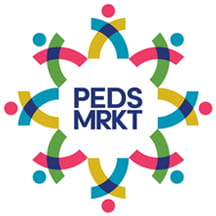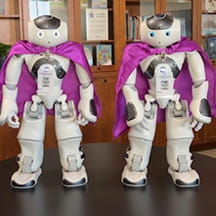When a child coughs half a world away, there’s a decent chance Devan Jaganath hears it.
Jaganath is among teams of researchers using artificial intelligence (AI) technology to collect and analyze the sounds produced by a child’s cough. Though his research focuses on diagnosing and treating tuberculosis in children in developing countries, the technology could soon become a fixture of pediatric medicine in the United States.
“The AI and data science world is realizing there's a lot of rich information in sound that we can quantify to better characterize or monitor a disease — and do it in a much more objective fashion than we have before,” said Jaganath, MD, MPH, pediatric infectious disease physician at UCSF Benioff Children’s Hospitals.
Types of AI cough detection
There are currently two types of research using AI-based cough detection.
- Single cough. AI models analyze the sounds of cough samples from a single patient to uncover features consistent with different diseases — not unlike an AI version of a medical provider listening to a patient’s cough.
- Continuous cough. A patient’s coughing activity is collected continuously — typically from a smartphone app or wearable device — to provide a wider range of the cough’s makeup, frequency, and severity. By comparing a patient’s data with tens of millions of cough sounds, this AI model helps health care providers more accurately assess its characteristics and diagnose disease.
“AI has advanced our ability to find specific patterns in sounds and classify a disease, or automatically monitor patterns in cough frequency or in one patient’s cough,” said Jaganath, whose research focuses on continuous coughs. “That is exciting from a pediatric standpoint because it provides a non-invasive tool to empower primary care providers, caregivers, and even adolescents and young adults more control over their health diagnosis, prevention, and monitoring.”
Benefits of AI cough detection in children’s health
Jaganath said this technology could have wide-ranging implications on pediatric health care in the not-so-distant future. It could help patients and their families understand whether a cough pattern requires the emergency department or can wait for a primary care office visit. Once a patient is under medical care, the data analysis can help a care team decide which tests to order. Following the administration of care, the tool can help monitor a child’s condition to ensure they’re recovering properly.
“There is a lot of potential in pediatrics specifically because this is a non-invasive tool,” Jaganath said.
The technology could also benefit public health. Capturing ambient sound in group settings, such as classrooms, can provide valuable data around the cough frequency and makeup of those in the room. An AI analysis of that data can warn administrators of possible disease outbreaks and inform precautionary steps.
“Theoretically, schools could set a threshold based on cough frequency in a classroom that could trigger a school policy,” Jaganath said. “It could also impact infection control practices on a community health level, where the data could be reported to public health agencies so they can be aware of rising cases of flu, COVID, or other diseases.”
Guiding the future of AI cough detection
Though the technology is currently offered via consumer-based apps, it’s not generally ready for use on a clinical basis in the United States. The field of acoustic epidemiology continues to work through technological challenges. Jaganath and his team, for example, have made great progress in eliminating false positive sounds, like sudden loud traffic or construction noises, from its cough sample recordings.
One of the biggest challenges in gaining widespread adoption will be privacy concerns. Jaganath believes the pediatric medical community can assume a leadership role in guiding protocols around future applications.
“The biggest thing is for pediatric clinicians to guide how these technologies fit into their practice and to set the clinical agenda. Their prioritization will be critical to move the field forward,” Jaganath said. “There’s a lot of potential here, but it's up to us in pediatric medicine to serve as strong advocates to guide what would be clinically useful.”



